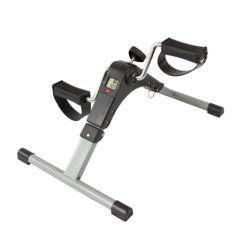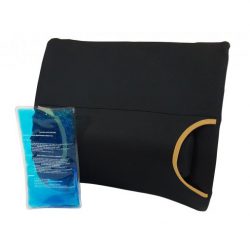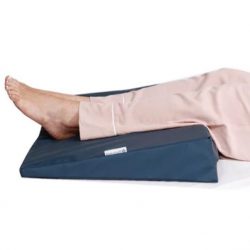Effective Tips and Mobility Aids for Relief & Prevention of Back Pain
Back pain has become an all-too-common part of our modern lives. The World Health Organisation (WHO) estimates that globally, about 80% of people will experience back pain at some point in their lives. Back pain can affect individuals of all ages, from adolescents to the elderly, and it is a leading cause of disability worldwide.
The presence of back pain can significantly impact daily activities, hindering productivity and diminishing overall well-being. Beyond its effect on our daily activities, back pain can have a ripple effect on your mood and sleep. Those grappling with chronic back pain are more inclined to report a decreased quality of life.
When looking for relief from back pain, adopting a multi-faceted approach is key—integrating lifestyle changes, targeted exercises, and the strategic use of mobility aids. This approach not only targets the symptoms but also aims to address the root cause.
Causes of Back Pain
Some causes of back pain are:
- Muscle or Ligament Strain: Repetitive movements, such as lifting or twisting
- Injury: slips, falls, or trips causing trauma to the back.
- Inflammatory Diseases: Osteoarthritis or rheumatoid arthritis leading to inflammation.
- Sciatica: pinched nerve in the lower back causing radiating pain.
- Bulging or ruptured discs: pressure on nerves due to disc issues.
Lifestyle Changes for Back Pain Relief
Maintain a Healthy Posture
Good posture is foundational to spinal health and plays a crucial role in both preventing and alleviating back pain.
Tips for maintaining proper posture:
- While sitting, keep your feet flat on the floor and ensure that your knees are at hip level. Support your lower back with a cushion or lumbar roll. Keep your shoulders relaxed and your elbows close to your body.
- While standing, distribute your body weight evenly on both feet. Stand tall with your shoulders back and relaxed. Tuck in your abdominal muscles to support your lower back.
- While lifting, bend at the knees, not at the waist. Keep the object close to your body as you lift and use your leg muscles to bear the weight.
Developing these habits can significantly contribute to maintaining a healthy posture, reducing the likelihood of back pain.
Regular Exercise
Exercise is a key component when working towards relieving back pain. It helps to strengthen core muscles and enhance flexibility. Regular physical activity promotes blood flow, which aids in the delivery of nutrients to the spine and surrounding tissues. It also improves mood and mental health, which can sometimes suffer when you have regular back pain.
Recommendations for low-impact exercises:
- Walking: simple yet effective exercise that engages the core and promotes overall well-being.
- Swimming: Offers a full-body workout while being gentle on the joints.
- Yoga and Pilates: Combines strengthening, flexibility, and relaxation techniques, providing holistic benefits for back health.
Consistency is key; integrating these exercises into your routine can contribute to a stronger, more resilient back.
Tip: You can use our Peak Pedal Exerciser to add gentle, regular exercise to your daily routine.
Ergonomic Workspace
The atmosphere at work has a big impact on back health, especially for people who sit at desks for long periods of time. Encouraging improved ergonomics can decrease the risk of back pain and relieve spinal stress.
Suggestions for an ergonomic workspace:
- Supportive Chairs: Choose chairs that provide proper lumbar support, allowing for the natural curve of the spine.
- Desk Height: Ensure that your desk is at a comfortable height to prevent strain on your shoulders and neck.
- Monitor Placement: Position your computer monitor at eye level to discourage hunching over.
Tip: Use a lumbar support in your chair. Our Peak Lumbar Support Cushion with Gel Pack is perfect for postural support at your desk.
By creating an ergonomic workspace, you create an environment that supports your back’s natural alignment, reducing the likelihood of discomfort and promoting overall spinal health.
Tips for Daily Activities
Lifting Techniques
Lifting objects safely is crucial to prevent strain on the back and reduce the risk of injury.
Here are some safe lifting techniques:
- Bend Your Knees, Not Your Back: When lifting objects from the ground, bend at the knees, keeping your back straight. This engages the powerful muscles of your legs instead of the spine.
- Keep the Object Close: Hold the object you’re lifting close to your body, which reduces the leverage and strain on your back.
- Use Your Core Muscles: Engage your core muscles to stabilise your spine while lifting. This protects your back and contributes to your overall core strength.
Sleeping Habits
The way you sleep can significantly impact your back health.
Here’s how sleep position and mattress quality play a role:
- Sleep Position: Certain sleeping positions can either alleviate or contribute to back pain. For example, sleeping on your back with a pillow supporting your neck and under your knees can help maintain spinal alignment.
- Choose the Right Mattress: A mattress that is too soft or too firm may not provide the right amount of support for your back. Find a mattress that aligns with your preferred sleep position and provides proper spinal support.
- Pillow Support: Ensure that your pillow adequately supports your head and neck, maintaining a neutral spine alignment.
Tip: You can use our Therapeutic Heel Wedge for under your knees to support your spine in bed.
Stress Management
There is a strong connection between stress and back pain. Addressing stress can positively impact your back health.
- Understanding the Connection: Stress can manifest physically, leading to muscle tension and increased sensitivity to pain. Chronic stress may increase existing back issues or contribute to their development.
- Stress-Reducing Activities: Integrate stress-reducing activities into your routine, such as meditation and deep breathing. These practices not only calm the mind but also relax the muscles, alleviating tension in the back.
- Regular Breaks: Incorporate short breaks throughout the day to engage in activities that bring relaxation, whether it’s a brief walk, stretching, or mindfulness exercises.
Incorporating Mobility Aids
Mobility Aids and Back Pain
Mobility aids play a pivotal role in effectively managing back pain by providing targeted support. These aids contribute to improved mobility and comfort, allowing you to navigate your daily activities with reduced strain on the back.
Products from GMobility
Our products are designed and curated to provide effective support and comfort, contributing to an improved quality of life. Each product serves a specific purpose, whether it’s promoting proper posture, alleviating strain during daily activities, or offering targeted support to affected areas.
Learn more about the functionality and benefits of each product, understanding how they can seamlessly integrate into your back pain management routine.
Some other products that can assist you with improving your back pain management routine:
- Soft Swivel Transfer Seat to allow a smooth swivel transfer in and out of a seat without painful jarring or twisting of the back.
- Ossur Form Fit Advanced Back Support to provide compression and support from muscular or chronic low back pain, Lumbosacral Strains or Sciatica.
- Total Spinal Support Backrest for supporting your back in the car, office or on the couch.
- Configura Comfort Recliner Lift Chair for comfortable seating to users with mild to moderate postural requirements.
Consulting with Healthcare Professionals
The Importance of Professional Advice
Navigating back pain effectively involves more than just utilising mobility aids; it also requires personalised guidance from healthcare professionals. Consulting with doctors, physical therapists, or occupational therapists is essential to tailoring an individualised approach to back pain management.
These professionals possess the expertise to assess specific needs, offer personalised recommendations, and guide individuals on the optimal use of mobility aids in conjunction with other strategic measures. Their insights enhance the effectiveness of the overall back pain management strategy, ensuring a targeted and holistic approach.
A Holistic Approach
If you have back pain, the best way to manage and prevent long-term problems is to combine lifestyle changes, focused exercises, and mobility aids with regular visits to a professional. At GMobility, we take pride in offering a wide selection of useful products that can assist you with preventing and reducing back pain.
For more information, contact us here.
If you require more assistance in choosing the right equipment to suit your needs, contact our team today for more information. You can call us on 1 300 00 4662 or send an email to info@gmobility.com.au.

 Log In
Log In


